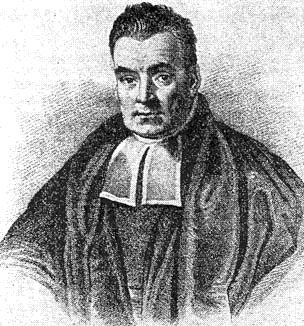Thomas Bayes (1701-1761)

Reverend Thomas Bayes was a nonconformist minister, who
studied at Edinburgh University. He was interested in
mathematics and corresponded with leading mathematicians of his
time. He only published two works during his life, both
unrelated to probability: one in 1731 called Divine
Benevolence: or, An Attempt to prove that the Principal End of
the Divine Providence and Government is the Happiness of his
Creatures and one in 1736 called An Introduction to the
Doctrine of Fluxions, and a Defence of the Mathematicians
against the objections of the Author of the Analyst. In
the latter, he refuted Bishop George Berkeley's The Analyst,
which used surface level understanding of calculus ideas to argue
that scientific development threatened religion. Bayes built his
argument on the foundational ideas of calculus. Both of Bayes'
works were focused on religion, but when he died, another
minister, at his family's request, looked at his unpublished
papers related to mathematics and found An Essay towards Solving
a Problem in the Doctrine of Chances
and published it. At
first, it received very little notice, but then gathered both
positive and negative recognition because of its controversial
central idea called inverse probability. The idea of inverse
probability is manifested today in both Bayesian statistics
and the more common
Bayes' Rule
, and it is possible that Bayes never
published this work because of the controversy he believed it would
bring.
Bayes' Rule has since been used in several applications,
including determining the causal relationship between smoking
and lung cancer. Another application was determining who wrote
some of the Federalist papers since a few were
attributed to both James Madison and Alexander Hamilton. To
determine who actually wrote them, statisticians analyzed the
prevalence of non-content words such as if
, when
,
and over
in the papers in question and the possible
authors' other writing. They found, for example, that Madison
used the word upon
$0.23$ times in $1,000$ words and
Hamilton used upon
an average of $3.24$ times in $1,000$
words. These estimates come from a distribution for each
potential author of the averages in all their works. Each
distribution can be used to calculate the probability that the
potential author wrote the given paper.

Bayes also contributed to the development of personal
probability
, which is the idea that there is no such thing
as a proven scientific fact. Instead, what are commonly
thought of as facts are statements that scientists have
identified as highly probable. The Bayesian view of statistics
has led to different approaches, including the Savage-de
Finetti which asserts that each individual has their own set of
personal probabilities. In another, the Keynes view,
probability is the overall confidence an educated person in a
given culture has in a particular statement. The most famous
idea credited to Bayes is based on the assumption that there
is a starting personal probability that is modified by data.